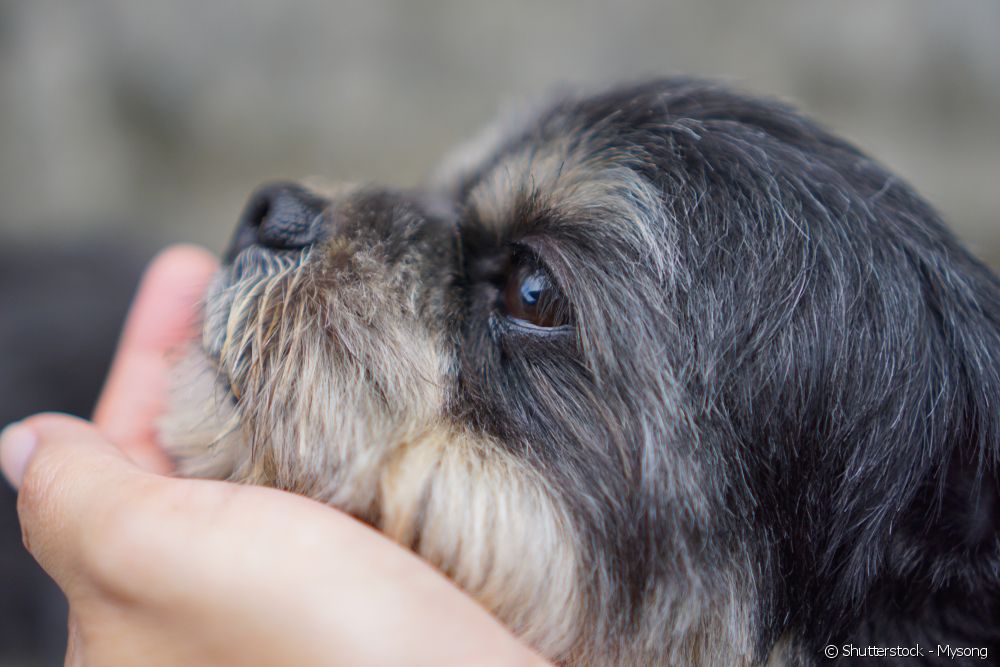How to care for acid tear in dogs like the Shih Tzu, Lhasa Apso and Pug?

Table of contents
The main sign of acid tear in dogs is the darkening of the area around the eyes. Usually, it is at this moment that the owners realize that there is something wrong with the way the pathway that leads the tear from the eye to the nose. But how to take care of the problem? Breeds with more propensity to acid tear - such as Shih Tzu, Lhasa Apso and Pug - need a special routine? Find out now!
Acid tear: what is epiphora?
Dogs' eyes, just like ours, have a constant natural lubrication. However, unlike us - who cry when we feel sad or other emotions - tears only flow down the face of dogs when there is something preventing them from draining. Dogs will show emotions through vocalization and body expression: position of the tail, ears, etc.
Although the name "acid tear" has become popular, the pH of the liquid that drips from the dog's eyes is neutral. There are two substances naturally present in the tear - lactoferrin and porphyrin - that when they come into contact with the animal's coat, change its color. Therefore, the correct term to refer to the condition is epiphora, which is nothing more than the obstruction of the tear duct.
How to clean Shih Tzu's eyes?
The eyes of the Shih Tzu need constant attention from the guardian. Among the breeds that can present the problem, this is one of those that accumulates the greatest predisposition. In addition to having a short tear duct, the Shih Tzu has a lot of hair around the eyes. This characteristic is also a factor that can cause the appearance of acid tear. The same happens with the Maltese.
See_also: Is it bad to use dog hair dye? Veterinary dermatologist explains the risks and precautions!
Do you know those brown spots that appear just below the eyes of the Shih Tzu, the Lhasa Apso and the Poodle, for example? They are a consequence of the contact of the coat with lactoferrin, a substance present in the acid tear. In addition to damaging the aesthetics of the animal, the accumulation of this secretion can cause an unpleasant smell, in addition to being the ideal environment for the proliferation of bacteria and bacteria.fungi.
It is important to keep the bath and, especially, the grooming always up to date. On a daily basis, ensure that the area just below the Shih Tzu's eyes is not wet. The ideal is to clean around the eyes with gauze and saline solution. Then, it is necessary to dry well using a clean gauze, never with cotton - which can leave some hair inside the animal's eye.
See_also: Ashera: meet the world's most expensive cat (with infographic)Acid tear: Pug dog also needs special care
Despite not having the long hair issue, Pugs and Bulldogs - both French and English - also often suffer from acid tear. The super short muzzle is the main reason behind the always wet eyes of dogs of these breeds. In addition, in the Pug, there is still another anatomical issue: the bulging eyes impair the positioning of the eyelids, which also reduces the ductuslacrimal.
A good idea is to include in the acid tear dog care routine a massage that is almost a cuddle and serves to unclog the dogs tear duct, allowing the tears to drain more efficiently. Simply position your thumbs on the inner corner of the dog's eyelids and make circular movements, applying gentle pressure.

